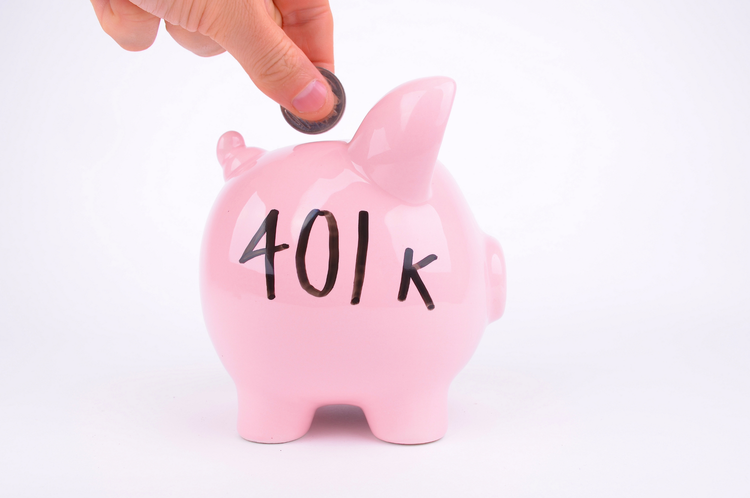Equity compensation that may or may not be available, sometimes called stock compensation or share – based compensation, is a noncash payout to select number of employees via restricted shares and stock options. The limited employees who received this perk gain stake in their companies, enabling them to hold partial ownership of the business and its profits. This is popular with startups that can’t afford to pay out huge salaries often include some form of stock benefits in their hiring packages to make their offers more competitive, and to motivate their employees to do better work. If you are a Tesla employee, considering equity compensation could be to your advantage depending on the financial situation the company you work for is in.
In theory, the more successful you are in your role, the higher Tesla’s value and stock will climb, and the more money you’ll make when and if you choose to sell your stake in the company. It’s typically a win-win situation.
When accepting a job offer however, as a Tesla employee it’s important to understand how to take advantage of the rewards of stock benefits while mitigating the risks. The first step is learning how to decode all the jargon.
Equity Compensation
It’s important first to understand the different types of equity compensation, the advantages of each, and how they’re taxed.
Stock options
Stock options allow you to purchase shares in Tesla’s stocks at a predetermined price, also known as a strike price, for a limited number of years (usually 10). Like all equity compensation, stock options encourage you to stay with Tesla longer because there’s typically a vesting period before the options become exercisable. This means that you have to be employed with Tesla for a certain amount of time — determined by the company — before you can actually exercise (or buy) the stock you were granted.
What is the benefit of having stock options? If the company you work for as a Tesla employee is performing well, the strike price of your stock will be lower than its fair market value by the time your options vest. This means you can buy Tesla stocks for a lower price and sell them at the higher fair market value. This can turn into a significant financial gain if the price of Tesla stocks grows over time. At the same time, if the stock performs poorly and the price never increases above your strike price, your options can expire as worthless. As a Tesla employee, it is important to consider the situation the company you work for is in prior to accepting any form of equity compensation. This serves the purpose of avoiding losses in the event of a decrease in share value.
As a Tesla employee a in stock options investment, you may want to understand how until you exercise your stock, you’re not putting any of your capital at risk. In this way, Tesla stock options allow you to have skin in the game without putting money down upfront.
Non-Qualified Stock Options vs. Incentive Stock Options
There are two types of stock options — non-qualified stock options (NSOs) and incentive stock options (ISOs): NSOs if available would enable you to purchase Tesla stocks at a specific price, while ISOs enable you to purchase stock at a discounted price with potential tax breaks on the profit. As a Tesla employee, understanding the benefits of NSOs and ISOs allows you to plan for your specific financial needs more adequately when considering investing in stock options.
Restricted stock units
For Tesla employees, restricted stock units (RSUs) are the most common type of equity compensation and are typically offered after a private company goes public or reaches a more stable valuation. Like stock options, RSUs vest over time, but unlike stock options, you don’t have to buy them. As soon as they vest, they are no longer restricted and are treated exactly the same as if you had bought Tesla’s shares in the open market.
In this way, RSUs carry less risk than stock options. As long as your stock price doesn’t drop to $0, they will always be worth something. As a Tesla employee who is planning for more conservative returns with heightened stability, RSU's may be an alternative for you to consider.
Let’s evaluate a hypothetical scenario: Assume that you are granted 10,000 RSUs that vest over four years. The stock price stays at $10 for the whole four years (rather than vary as it normally would). This means the value of the RSUs is $100k. In this same situation, stock options that have a strike price of $10 would be entirely worthless unless the stock price goes up.
Like stock options, RSUs usually vest over several years. It’s common to receive 1/4 of the RSUs you were granted after your first year of employment, and every month after that, receive another 1/36 of the remaining grant. When doing your taxes, the value of the shares at the date of vest is taxed as ordinary income. Also like stock options, RSUs encourage employees to stay with Tesla longer because they vest over time.
Negotiating, Evaluating, Exercising, and Investing
Now that you understand some of the language, it’s time to put your new knowledge into practice. Here’s what you need to know about how to negotiate, evaluate, exercise, and invest your Tesla equity compensation in a way that will benefit you (and your wallet).
Negotiate
If you are a Tesla employee being offered equity compensation, you should negotiate it just like your cash salary. For example, a company might offer you a $75,000 cash salary with $20,000 worth of RSUs that vest over the next four years. For illustrative purposes, if the value of Tesla's stock stays consistent, that means you can expect to receive $5,000 of company stock each year, bringing your cash-plus-stock compensation to $80,000 annually. If you were looking for something closer to $90,000, you can negotiate a higher cash salary, more RSU grants, or a combination of both to achieve your desired income. Because stock compensation is generally tied to the success of Tesla, employers tend to prefer giving more stock over more cash.
Tesla companies typically issue a grant of options or RSUs with your first job offer, followed by refreshers either annually or as a bonus. In one high-profile example, JPMorgan CEO Jamie Dimon just received a bonus of 1.5 million stock options that vest over five years — an incentive meant to increase his likelihood of staying at the company.
At the manager level, Tesla companies sometimes even give employees the option to take a percentage of their salary in RSUs versus cash. If you’re offered a total compensation package of $100k, for instance, Tesla might give you the option to take the full amount in cash, or up to 75% as RSUs. You would come out on top if the company shares go up in the future.
Evaluate
If you are a Tesla employee and agree to any type of equity compensation, you must be careful about how much company stock to hold. Balancing both the risks and the rewards of concentrating your investments around a single entity. Don’t let this accumulate and become too large a part of your net worth.
As we’ve seen in the last 12 months, a downturn in the economy can decimate people’s financial safety. At the onset of the global pandemic, companies like Zoom and Amazon saw surges in market gains, while stocks in companies like American Airlines and Marriott plunged. As a Tesla employee receiving equity compensation it is helpful to calculate how much stake you have in your company relative to your net worth; this includes not just your salary and vested equity compensation, but also your unvested equity compensation and future salary.
If you want to put a number to it, consider this hypothetical scenario: Let’s say you earn $100k a year, plus $20k of RSUs that vest each year. You’ve been working at Tesla for four years and have done a fantastic job of saving. You have $100k in cash saved, plus $100k in company stock. This means half of your savings is in the company stock — you may be taking a risk by putting so much money into Tesla. Equity in Tesla should be part of a balanced approach to accumulating wealth. In order to have a balanced portfolio, you’ll either need to invest cash salary or diversify some of your equity compensation by investing in different things. Consider diversifying over a few years.
This is what I would suggest to someone employed in a Tesla company and in this situation:
Featured Video
Articles you may find interesting:
- Corporate Employees: 8 Factors When Choosing a Mutual Fund
- Use of Escrow Accounts: Divorce
- Medicare Open Enrollment for Corporate Employees: Cost Changes in 2024!
- Stages of Retirement for Corporate Employees
- 7 Things to Consider Before Leaving Your Company
- How Are Workers Impacted by Inflation & Rising Interest Rates?
- Lump-Sum vs Annuity and Rising Interest Rates
- Internal Revenue Code Section 409A (Governing Nonqualified Deferred Compensation Plans)
- Corporate Employees: Do NOT Believe These 6 Retirement Myths!
- 401K, Social Security, Pension – How to Maximize Your Options
- Have You Looked at Your 401(k) Plan Recently?
- 11 Questions You Should Ask Yourself When Planning for Retirement
- Corporate Employees: 8 Factors When Choosing a Mutual Fund
- Use of Escrow Accounts: Divorce
- Medicare Open Enrollment for Corporate Employees: Cost Changes in 2024!
- Stages of Retirement for Corporate Employees
- 7 Things to Consider Before Leaving Your Company
- How Are Workers Impacted by Inflation & Rising Interest Rates?
- Lump-Sum vs Annuity and Rising Interest Rates
- Internal Revenue Code Section 409A (Governing Nonqualified Deferred Compensation Plans)
- Corporate Employees: Do NOT Believe These 6 Retirement Myths!
- 401K, Social Security, Pension – How to Maximize Your Options
- Have You Looked at Your 401(k) Plan Recently?
- 11 Questions You Should Ask Yourself When Planning for Retirement
Now: $100k cash, $100k company stock
Year One: Invest $60k of cash in either stocks or bonds using a split that’s appropriate for your goals and willingness to take risks, and hold $40k as emergency savings. Then, diversify the new shares of RSUs that vest (in other words, sell them and use the money to invest in other stocks). This will have minimal tax consequence. You should also consider investing another $20k in Tesla stock to balance diversifying and paying taxes.
- Cash: $40k
- Diversified portfolio: $80k
- Company stock: $80k
Year Two: Diversify the new shares of RSUs that vest because that has minimal tax consequence, plus maybe another $20k in Tesla stock to balance diversifying and paying taxes.
- Cash: $40k
- Diversified portfolio: $120k
- Company stock: $60k
Year Three: Diversify the new shares of RSUs that vest because that has minimal tax consequence, plus maybe another $20k in Tesla stock to balance diversifying and paying taxes.
- Cash: $40k
- Diversified portfolio: $160k
- Company stock: $40K
Year Four: Diversify the new shares of RSUs that vest because that has minimal tax consequence, plus maybe another $20K in Tesla stock to balance diversifying and paying taxes.
- Cash : $40k
- Diversified portfolio: $200k
- Company stock: $20k
At the end of the fourth year, your Tesla company stock makes up just under 10% of your portfolio, as opposed to the 50% you started with. (Generally speaking, one company’s stock shouldn’t make up more than 10% of your investment portfolio.) Continue to manage future RSUs and other equity compensation similarly.
No matter your situation, the main question you want to ask yourself as a Tesla employee is: “What does my personal financial picture look like if my company stock is cut in half tomorrow or even drops to $0?” This will obviously hurt everyone at Tesla, but you want to make sure it doesn’t completely destroy your finances. That typically involves having an investment portfolio that is appropriate for each major financial goal you have and an emergency savings account to cover basic needs for three to 12 months.
Tax-Optimized Sales
There are multiple ways to diversify your portfolio as a Tesla employee. Some are more tax-efficient than others. For instance, selling recently vested RSUs or recently exercised non-restricted stock options (NSOs) will likely have minimal tax consequence.
If you hold exercised incentive stock options (ISOs), it would be beneficial to sell your stock options that meet the special holding requirement (i.e. you’ve held the shares for two years since the grant date and one year since the exercise date) before selling your stock options that do not meet the holding requirement. Stock options with a special holding requirement are taxed as long-term capital gains, and the tax rates for long-term capital gains are lower than regular income tax rates.
Lastly, it’s best to sell company stock acquired through a Tesla employee stock purchase plan (ESPP) last. ESPPs are company stock benefits that enable employees to purchase company stock at a discounted price (usually at 5% to 15%). You contribute to the plan through payroll deductions — similar to how you contribute to a company 401(k) — which then accumulates between the offer date and the purchase date. ESPPs are often a fantastic benefit for employees, but sales of ESPP shares are often taxed at higher rates compared to selling shares acquired through RSUs and both types of options.
This is generally a good direction for those employed in Tesla to follow, but everyone’s situation is unique. Talk to an accountant or financial planner specializing in equity compensation if you need help diversifying your portfolio while minimizing taxes. It’s all about being tax-smart without letting taxes on equity compensation drive your diversification decisions.
Maximizing Tax-Savings Opportunities
Consider investing the proceeds from your equity compensation by funding tax-advantaged accounts, which are savings accounts that are exempt from taxes today or in the future or that offer other tax benefits. For example, you could use the money you make to cover your ongoing cash needs to max out your Tesla 401(k) or Roth 401(k) account. You could also use the proceeds to fund a traditional IRA or Roth IRA.
Traditional 401(k) and IRA accounts provide a tax benefit upfront, while the Roth versions provide a tax benefit at withdrawal, and both provide a tax benefit while the account is growing. If you are employed in a Tesla company and eligible for a health savings account (HSA), consider using proceeds from your equity compensation to contribute to this. HSAs provide a tax benefit upfront and at the time of withdrawal, as long as they are used for a wide array of qualified medical expenses.
The stock market can be an intimidating arena for people who haven’t tested the waters before. But if Tesla offers equity compensation as part of its benefits package, participating could lead to amazing financial returns. Take the time to put in the necessary research so you can participate with confidence.
What type of retirement savings plan does Tesla offer to its employees?
Tesla offers a 401(k) retirement savings plan to its employees.
Does Tesla match employee contributions to the 401(k) plan?
Yes, Tesla provides a matching contribution to employee 401(k) plans, subject to certain limits.
What is the maximum employee contribution percentage allowed for Tesla's 401(k) plan?
Employees at Tesla can contribute up to the IRS limit, which is typically 100% of their salary up to a specified dollar amount.
Can Tesla employees choose between traditional and Roth 401(k) contributions?
Yes, Tesla offers both traditional and Roth 401(k) contribution options for employees.
How often can Tesla employees change their 401(k) contribution amounts?
Tesla employees can change their contribution amounts at any time, subject to plan rules.
What investment options are available in Tesla's 401(k) plan?
Tesla's 401(k) plan offers a variety of investment options, including mutual funds, target-date funds, and company stock.
Is there a vesting period for Tesla's 401(k) matching contributions?
Yes, Tesla has a vesting schedule for matching contributions, which typically requires employees to work for a certain period before they fully own the match.
Can Tesla employees take loans against their 401(k) savings?
Yes, Tesla allows employees to take loans against their 401(k) savings, subject to specific terms and conditions.
What happens to my Tesla 401(k) if I leave the company?
If you leave Tesla, you can roll over your 401(k) to another retirement account, cash it out, or leave it with Tesla, depending on the plan rules.
Are there penalties for early withdrawal from Tesla's 401(k) plan?
Yes, early withdrawals from Tesla's 401(k) plan may incur penalties and taxes unless specific conditions are met.




-2.png?width=300&height=200&name=office-builing-main-lobby%20(52)-2.png)











-2.png)








